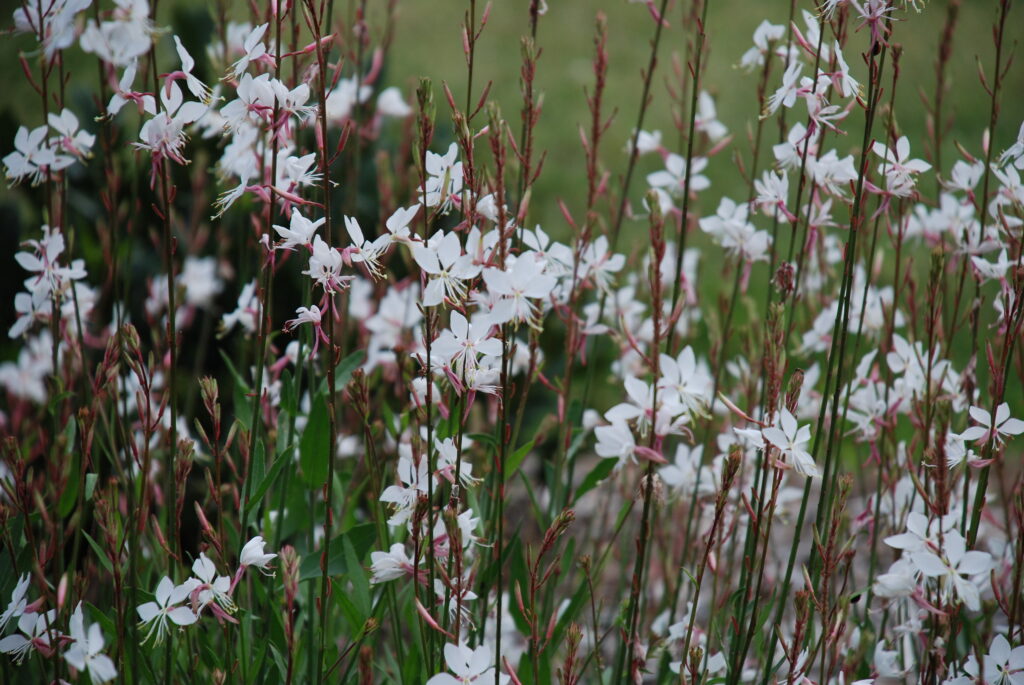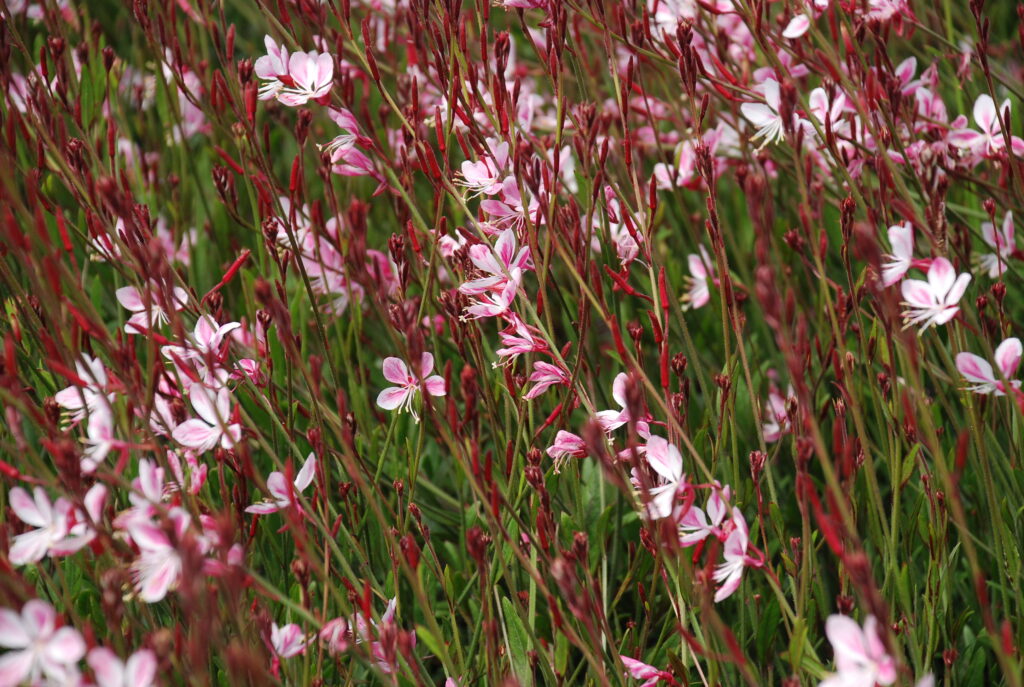
Gaura (Oenothera lindheimeri) is a low-maintenance perennial native to the southern U.S. (Zones 5-9) and is a durable plant for gardeners. Its waving wands are dotted with dozens of whitish to pinkish flowers don’t stop blooming until summer temps climb above the 90°F range. Gaura is often called “whirling butterflies” because the flowers appear to dance in the breeze.
Gaura blooms all summer long producing graceful wands of nectar-rich white, pink, or bi-colored flowers that butterflies love. The deer-resistant plants grow 2-3 feet tall. Although whitish flowering forms have small, mostly non-distinctive green leaves, the foliage develops reddish tones in the dark pink flowering varieties.

Gauras are not long-lived perennials; wet winter soil will kill these drought-tolerant natives. Thus, site selection and ground prep are very important components in growing gauras. Plants have a long deep taproot and can be difficult to transplant. It is heat and drought tolerant and can handle high humidity with ease. It’s at its best in full sun but tolerates some afternoon shade in warm Southern climes. Excellent drainage is the key to success. Amend the soil with a mix of compost and gritty sand (not beach sand) or in raised beds.
Plant 3-5 gaura plants for maximum impact and space them at least 12-15 inches apart. Dwarf varieties are also an excellent container plant. Irrigate gaura sparingly to encourage this taproot plant to dig deep. Generally, gaura thrives in poor lean soil and does not require fertilizing. Too much fertilizer can make plant(s) floppy.
Gaura (Wandflower) Varieties- Four beautiful varieties include:
- ‘Corrie’s Gold’: Flowers are white tinged with pink and gold variegated foliage.
- ‘Passionate Rainbow’: pink flower wands and pink-edged foliage.
- ‘Siskiyou Pink’: showy rose-pink flowers on its notably wispy stems.
- ‘Sparkle White’: dainty white flowers are tinged with pink.
Overall, gauras may be affected by certain pests like aphids, whitefly and flea beetles. Root rot may occur in heavy and/or poorly drained soils. Rust and powdery mildew may also occur. Applications of insecticidal soap should resolve most pest issues. Gauras are also deer and rabbit resistant.
Gaura plants may flop over in the garden, and staking may be an option. Rigid, upright flowers like hyssop (Agastache), ‘Autumn Joy’ sedum, globe thistle (Echinops), or blazing star (Liatris) have similar growing conditions and blooming periods in a dry garden. Flowers invite pollinators by the score. Dwarf varieties make also excellent container plants.

 Posted in
Posted in 
